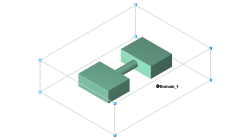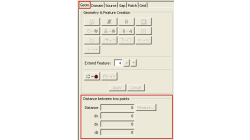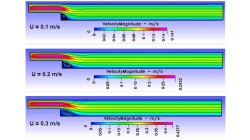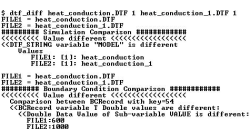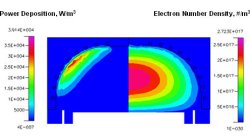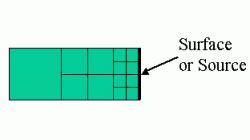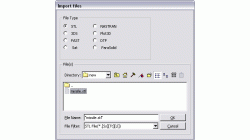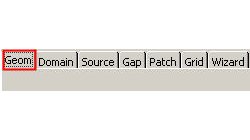- Home
- リソース
- ヒントとコツ
Tips & Tricks
Hole Detection Feature in CFD-VisCART
CFD-VisCART can handle geometries with small gaps, cracks and overlapping parts, but what if there is a big hole or opening in one of the parts that the user is not aware of? The grid will flow through this opening and the result will be a mesh that has cells both inside and outside the model. This leaves the user with the near impossible task of finding this opening. In CFD-VisCART, a Hole Detection feature has been introduced that performs this task for the user.
Abraham
Meganathan
CFD
Distance Measuring Tool in CFD-VisCART
CFD-VisCART has a simple and easy-to-use tool for measuring the distance between two points in a geometry. This tool can be found under the Geom tab.
Abraham
Meganathan
CFD
Using "Visual Scaling" for Models with Drastically Varying Length Scales
For models that have drastically varying length scales, it can be difficult to create the grid, setup a model, and post-process the results. CFD-GEOM, CFD-ACE-GUI and CFD-VIEW have a "Visual Scale" capability that can significantly help when working with these types of models.
Abraham
Meganathan
CFD
Parametric Studies Using SimManager
Parametric studies are an important aspect of CFD analysis. Parametric studies are used to perform trend base analyses, optimize the deign of a device, and/or to study the affect of different parameters on a process (What if? type analysis).
Abraham
Meganathan
CFD
How to Compare the Model Setup Between Two DTF Files
Have you ever wanted to find the differences between two DTF files? If you have, then you will probably be interested in a DTF utility included in your ESI Software installation. The utility is called dtf_diff and can be found in your UTILS_2009.0/bin directory.
Abraham
Meganathan
CFD
CFD-ACE+ and CFD-TOPO Coupling
There is a growing demand and challenge in different industries, especially semiconductor and MEMS areas, to have increased wafer size with reduced feature size, i.e. high quality process uniformity.
Abraham
Meganathan
CFD
Understanding cell-splitting in CFD-VisCART and its effect on cell count
A grid created in CFD-VisCART will have a high percentage of Cartesian cells (100% for Stair-Step Mesh; as high as 90-95% for Projected Mesh). Since these form the bulk of the grid, it helps to make sure that these cells are built in an efficient manner.
Abraham
Meganathan
CFD
Using CFD-VisCART in Batch Mode
CFD-VisCART allows you to handle extremely complex geometries with lots of details. Often, you may have a geometry that you only modify slightly, but would like to use the mesh parameters that you used previously. In order to make this very simple, a batch mode was implemented for CFD-VisCART v2006.
Abraham
Meganathan
CFD
Splitting a Model in CFD-VisCART
CFD-VisCART is a 3D unstructured adaptive Cartesian mesh generator. It is ideally suited for external aerodynamics and automotive underhood applications involving extremely complex geometries. Models/geometries in SAT, Parasolid, STL, Nastran, 3DS, Plot3d and FAST formats can be imported into CFD-VisCART.
Abraham
Meganathan
CFD
Grouping Objects in CFD-VisCART
When handling complex geometries in CFD-VisCART, the list of geometric surface can quickly become very large and make the management of the model rather tricky.
Abraham
Meganathan
CFD
